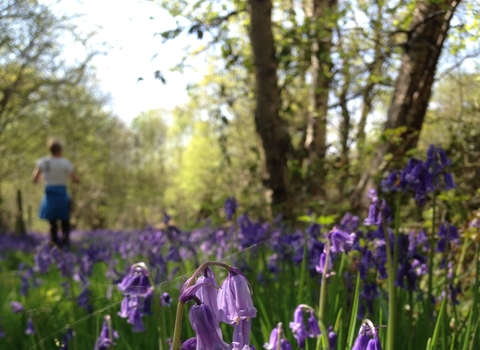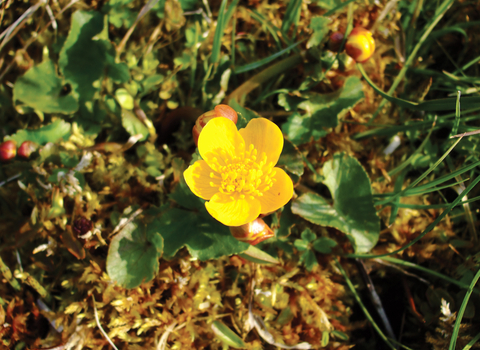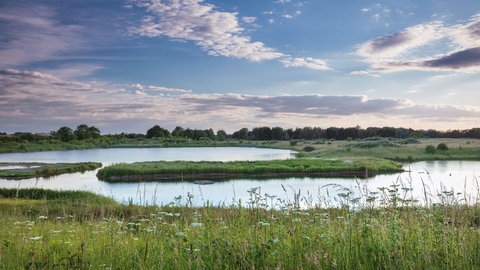
(C) John Potter
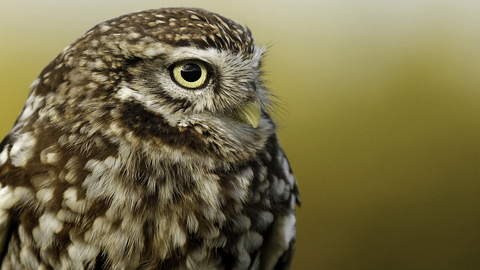
WildNet - Jon Hawkins - Surrey Hills Photography
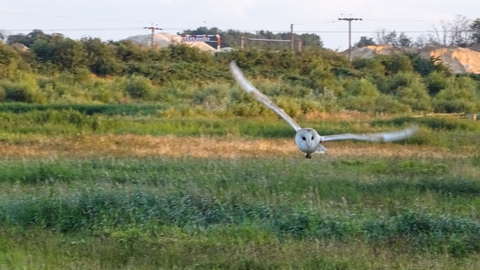
Barn owl, North Cave Wetlands - Anne Webb
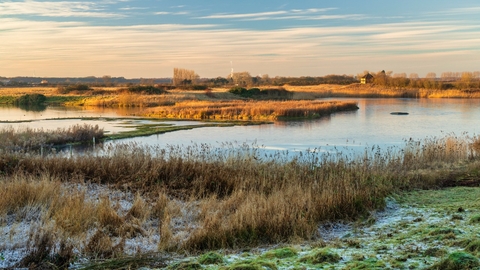
Wigeon © Richard Scott
North Cave Wetlands Nature Reserve
Location
Know before you go
Dogs
Dogs permitted along Dryham Lane only, not on the reserve
When to visit
Opening times
The nature reserve is open at all times. We recommend a half day trip for this reserve, but if you would like a longer wildlife outing why not visit North Cliffe Wood, the Wolds Way National Trail or even the coast?The Little Butty Bus is open from 8am until 2:30pm Tuesday to Sundays.
Best time to visit
March to SeptemberAbout the reserve
North Cave Wetlands is positively dripping with wildlife, whatever the time of year. Boasting a mixture of shallow and deep-water lakes with wide margins and islands, reedbeds, grassy banks and meadows, hedgerows and wooded fringes, this still-expanding reserve was once part of a huge marsh called Wallingfen. Having been turned over to agriculture and then quarrying, it’s now returning to its former glory – and nature is responding in both numbers and diversity.
Easy walking and five perfectly positioned hides (with another due to open in the near future) make this the perfect place to get close to nature. North Cave has up to 2% of the national breeding population of avocets, one of Yorkshire’s biggest sand martin colonies and up to 2,000 pairs of black-headed gulls, a nationally significant number. In winter, it’s a paradise for wildfowl, welcoming large flocks of ducks and geese. Water rails and bitterns sometimes stray out of the reedbeds to the water’s edge. In spring, waders and common terns return for the summer, and the gull colony is in full voice, accompanied by calling reed buntings, sedge warblers and Cetti’s warblers. Autumn is a time of movement, as summer visitors depart, winter visitors arrive and migrants pass through. You never know what might turn up!
Contact us
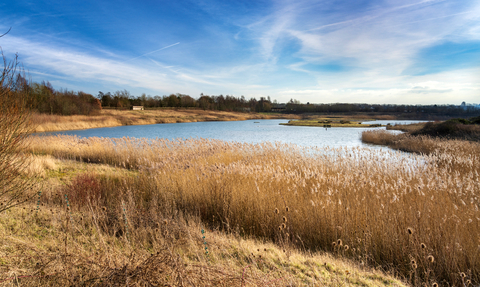
(C) John Potter
Will you donate today?
About
A mixture of shallow and deep water lakes and reedbeds provide outstanding habitat for passage, breeding and wintering wildfowl, waders, terns and gulls. A 2km perimeter path gives access around the established nature reserve and five hides are positioned to give excellent viewing over key areas for birdwatchers and photographers alike.
Butterflies, dragonflies and damselflies thrive on the grassy banks beside the perimeter path; watch out for the emperor dragonfly and sometimes spy a water vole. There is a small colony of brown argus butterflies in the meadow between Main and Carp Lakes, access to which is opened in summer months.
Every season is a great time to visit North Cave Wetlands: During the winter the reserve has good numbers of wintering wildfowl and waders; spring sees the return of summer visitors which includes avocet, little ringed plover, oystercatcher, and a large black headed gull colony with Mediterranean gulls. North Cave also holds one of the largest breeding colonies of sand martins; in summer the reserve is full of fledgling birds, a wide range of dragonflies, grass snake and stoats; autumn sees the departure of summer visitors and the return of winter visitors along with many passage scarce birds.
And the good news is it's still a work in progress, so will continue to get better for wildlife and people!
Seasonal highlights
- Spring: Birds - Little ringed plover; Avocet; Redshank; Sand martin; Sedge warbler
- Summer: Invertebrates - Brown argus; Emperor dragonfly; Four-spotted chaser; Birds - Common tern; Hobby
- Autumn: Invertebrates - Common darter; Birds - Migrant waders; Tree sparrow
- Winter: Birds - Teal; Wigeon; Tufted duck; Water rail; Snipe
History
The original 40 hectare site was acquired by Yorkshire Wildlife Trust in 2001. In the following three years 250,000 tonnes of material was moved in, out or around the site to create a suitable open wetland habitat, with established trees confined to the boundaries and to the western end. Six large lakes provide both deep and shallow water with wide margins and islands, connected underground to give control over winter and summer water levels.
Starting in 2008 and finishing 12 to 15 years thereafter an additional 100ha of land to the immediate south and west is being quarried. This will be progressively restored with wildlife in mind before being gifted to Yorkshire Wildlife Trust.
Directions
Public transport
Nearest bus stop is North Cave village 0.5 miles away.
By car
Come off at Junction 38 of the M62/A63 and take the B1230 east to North Cave. At the first crossroad in the village, turn left onto Townend Lane and follow the brown reserve signs. If approaching north on the A1079 Market Weighton bypass take the minor road south through North Cliffe to North Cave then follow signs. The nature reserve is 15 miles west of Hull, of Cliffe Road on Dryham lane.
Mires Beck Nursery
Mires Beck Nursery is just next door to North Cave Wetlands - it's a perfect place to extend your visit!
In addition to their 14-acre site and huge array of plants, they have a woodland walk and provide horticultural training for people who have learning difficulties.
Did you know?
We are actively restoring and expanding this reserve in collaboration with the nearby quarry company and local community. The latest area to return to nature is the western extension, where we have created new habitats to encourage new wetland bird species.
Accessibility
Visitors will have different access needs and abilities and we want to provide some basic information about the reserve to help you decide whether this is a place you would like to visit and to help you plan.
Walking at North Cave Wetlands
A circular footpath runs around the perimeter of the reserve which take one to two hours to complete. Footpaths are mainly grass and stone surface - all on a flat level for very easy walking, wheelchairs and pushchairs. The stone paths are accessible all year round but grass paths can get very muddy in winter.
Footpaths to South hide, Crosslands hide, East hide, Turret hide and Crosslands hide are hard surface footpaths.
Benches are located all around the reserve and in hides.
There are three gates on site - all are easy to open pedestrian gates.
Transport
There is a large car park with two disabled parking places situated at the entrance to the reserve.
Facilities
There are two compost toilets on the reserve with disabled access.
Five hides on site East, South, North, Turret and Crosslands. All hides except Turret are fully accessible with wheelchair viewing space. All hides have benches.
As the name suggests, there are two flights of steps up to Turret hide with six steps on each flight. This is the only access to turret hide.
One set of steps to Crosslands hide of approx. 8 steps. Also a disabled access path to the hide for wheelchairs and pushchairs,
The Little Butty Bus is on site from 8am to 2-30pm providing hot and cold food and drinks six days a week apart from Mondays.
There is very good mobile signal across the whole reserve.
The What3Words code for the car park is punters.merchant.diner
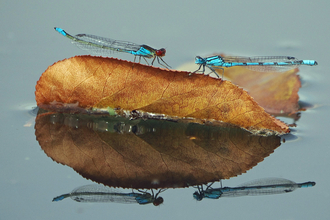
Damselfly duels at North Cave Wetlands
The two antagonists square up, eyeballing each other from close range, probing for a weakness. Huge cherry-red eyes meet huge bright…
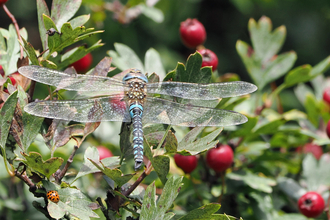
Water, woodlands and wildlife: a visit to North Cave Wetlands
Summer is giving way to autumn. Clusters of deep red berries nestle among the green leaves of the hawthorn hedges. If you look closely,…
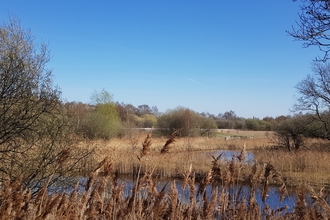
A tribute to Roger Mitchell
We remember Roger Mitchell, a beloved and charismatic leader whose perseverance and dedication to nature conservation and his vision for…

